20/05/2022
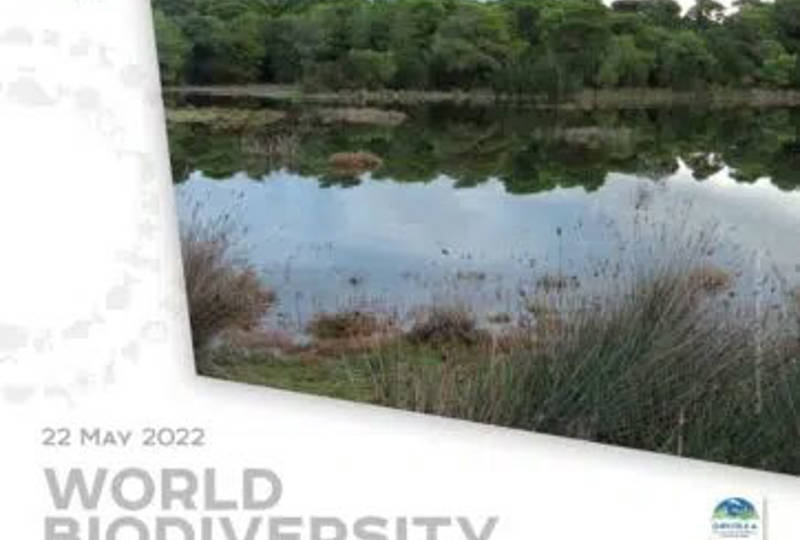
Greece is a place with very rich biodiversity. We are proud to welcome our guests to such a beautiful country. Aldemar Resorts Group hotels are located in two regions, Crete and Ilia, particularly renowned for their magnificent landscapes, but also for the abundance and rarity of their flora and fauna.
Today, with its festive character, is the perfect occasion to understand and raise awareness of biodiversity issues. The diversity and balance of all species of plants and animals is an essential issue and plays the most important role in the sustainable development of the planet. Human activity has created deep rifts in the biodiversity edifice as many animal and plant species have either disappeared or are threatened with extinction in recent years. The main reasons for the threats to biodiversity are intensive farming, industrial development, overexploitation of natural resources, pollution and global climate change.
At Aldemar Resorts Group for over 30 years we have been intensively taking action to protect the environment and ecosystems, ensure greater control and management to reduce impacts through activities, raise awareness, engage the community and mobilize resources.
The Wetlands Management Body of Kotichi – Strofylia and Cyparissia Gulf and the Natural Environment and Climate Change Agency inform us about the biodiversity of the entire prefecture of Ilia. At the same time, we suggest our visitors head to the National Park for a visit and participate in the guided tours that are organized. For more information visit the following websites:
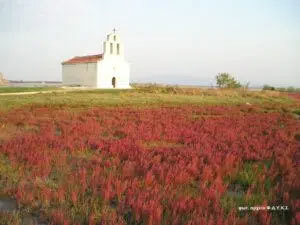
Biodiversity of Ilia
The prefecture of Ilia is characterized by its unparalleled beauty and its rich ecosystems. For this reason, the Management Body for the Kotysi – Strofylia Wetlands and Cyparissia Gulf is operating in the area. The purpose of its operation is the protection of the protected area and in particular the wetlands, the sand dunes and the pine forest of Strofylia, the most extensive pine forest in Greece. Along with protection, their aim is to inform people about the ecological importance of the area, to raise awareness of the citizens, and implement environmental education, guided tours and ecotourism programmes.
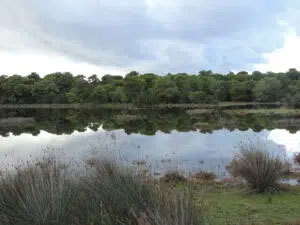
In the wider area where the Group’s hotels are located there are several locations of great importance.
Estuary (Delta) of Pinios
The river Pinios is located in the northeastern part of the prefecture of Ilia. West of the Pinios estuary (delta), there are sand dunes and the following protected species are found: the white willow, the silver-white willow and the eastern plane tree. In addition, four protected fish species (Peloponnesian bryozoan, dusky, liara, gurnard), two mammal species (otter and winged bat) and three turtle species (spotted, Mediterranean and leatherback turtle) are found in the estuary.
Plateau of Foloi
The plateau is home to the only flat forest in Greece, the oak forest of Foloi. The plateau is dominated by broad-leaved oaks and there are also plane trees, chestnut trees, pine trees, scrubby vegetation, bushes and herbaceous and herbaceous clumps. The area has a rich fauna: a wealth of mammals (otters), reptiles (the lapwing snake) and amphibians (salamanders). In addition, 117 species of birds have been recorded in the area, 17 of which are endangered. Finally, the natural environment includes the Amarkianos theatre-cave in Tsipiana, the unexplored Diakotrypa cave in Kryovrisi, and the two gorges that start from the Skliva area and end in large plane trees and rocks.
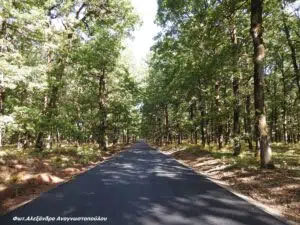
Olympia
It has been designated an area of outstanding natural beauty and is a declared archaeological site. The vegetation includes forests with endemic Mediterranean pine species, olive and carob forests, white willows, silver willows and toadflax. Finally, 13 species of amphibious reptiles and 97 species of birds have been recorded in the area.
Dunes and coastal forest of Zacharo, Lake Kaafa, Strofylia, Kakovatos
The area includes Lake Caiafa, which is separated from the sea by a section of pine forest, the coastal forest of Zacharo, and special sand dune formations. The lake is probably home to 11 species of fish. In addition, there are eight species of amphibians (common triton, tree frog, etc.) and 26 species of reptiles (caretta turtle, Siamese snake, viper, lapwing, etc.). A total of 160 bird species have been observed in the area, representing 37% of all species in Greece. The area also includes part of the forest of Strofylia, consisting mainly of pine and pine trees, but also of pine trees.
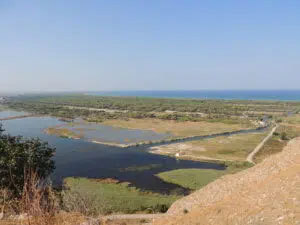
Flora of Ilia
The protected area of Strofylia and Kotichi is characterised by the existence of endemic and endangered plants. The Nieder’s centaur plant species is a rare endemic species of Greece. It is a protected species and its populations are threatened by the conversion of the rocky ecosystems in which it grows into quarries. Another plant species, the colchicus, is a pure endemic species of the Peloponnese found in the area of Kalogria. Apart from these rare and protected species, however, one can also find a variety of colourful and impressive wildflowers, such as orchids, crocuses, anemones, asphodels, irises, etc.
Fauna
Mammals
In the protected area there are small populations of endangered mammal species such as otters and jackals. There are also foxes, hedgehogs, hares, weasels and skunks, as well as small mammal species such as shrews and bats.
Birds
A characteristic feature of the protected area is its rich in numbers and diversity of birdlife. Many species nest and breed in the wetlands of the area, which is why two parts of the area have been designated as Special Protection Areas for Birds (SPAs) and are included in the Natura 2000 network. Some of the nesting birds are: the nannabird, the little chickadee, the water hen, the water rail, the phalarope, the reed bunting, the sea warbler, the nannock, the alcyon, the false nightingale and the bunting.
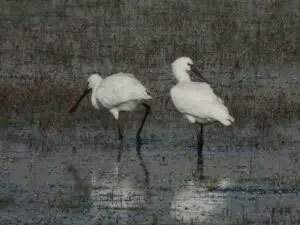
Birds of prey that breed in these areas are the owl, the guenon, the gull, the reed bunting, the rock shrike and the tree shrew. Throughout the winter, species such as white-throated kingfishers, whistling ducks, wigeons, scissor-tailed godwits, green-headed ducks, wigeons, wigeons, bald eagles, calicoes, etc. persist. Cotychi, in particular, is an important resting place for many migratory birds, such as herons, egrets, grackles, swallows, swifts, goshawks, kestrels, wigeons, terns, etc.
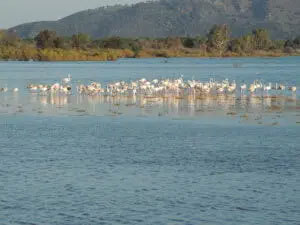
Reptiles
24 species of reptiles live in Strofyllia and Kotychi, represented by 12 species of snakes, 7 species of lizards, and 5 species of turtles. Among the latter is the sea turtle Caretta caretta, which is classified as a priority species and an endangered species by the Red Book of Vertebrates.
Amphibians
There are 8 species of amphibians in the wetlands and surrounding areas of the forest, namely 7 species of frogs and toads and 1 species of triton. Among the rarest in the area are the Peloponnesus and Telmatotriton. Amphibians as a group are important indicators of the natural environment and give us information about the health of water systems and the ecosystem in general.
Fish fauna
The lagoons in the protected area contain a variety of fish species, many of which are important for commercial fisheries, such as mullet, bream, sea bass, sea bass, eels and shellfish. Priority species include the carp Aphanius fasciatus and Valencia letourneuxi which is also on the red list of threatened species where it is classified as critically endangered.
Offers on hotel rooms delivered directly to your inbox